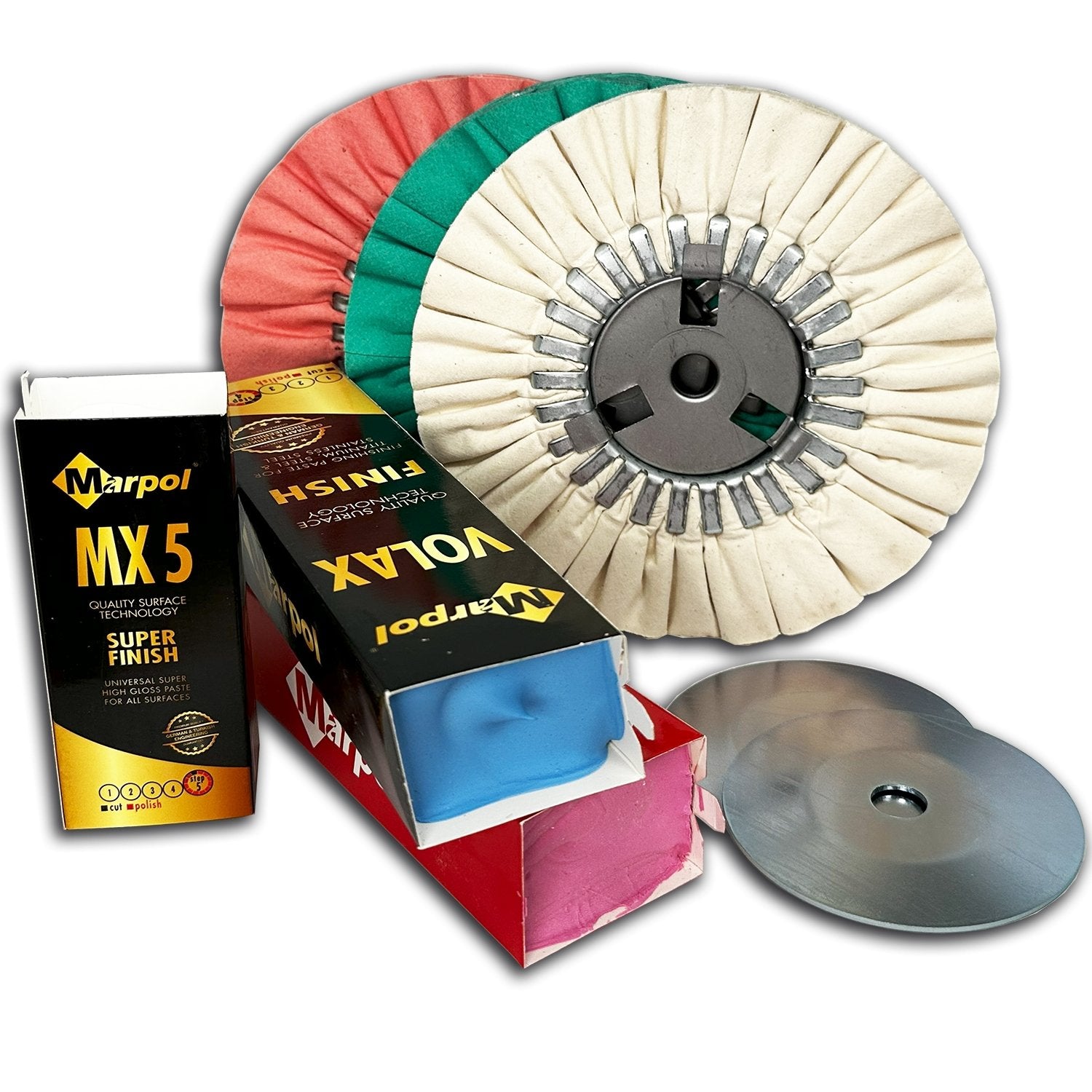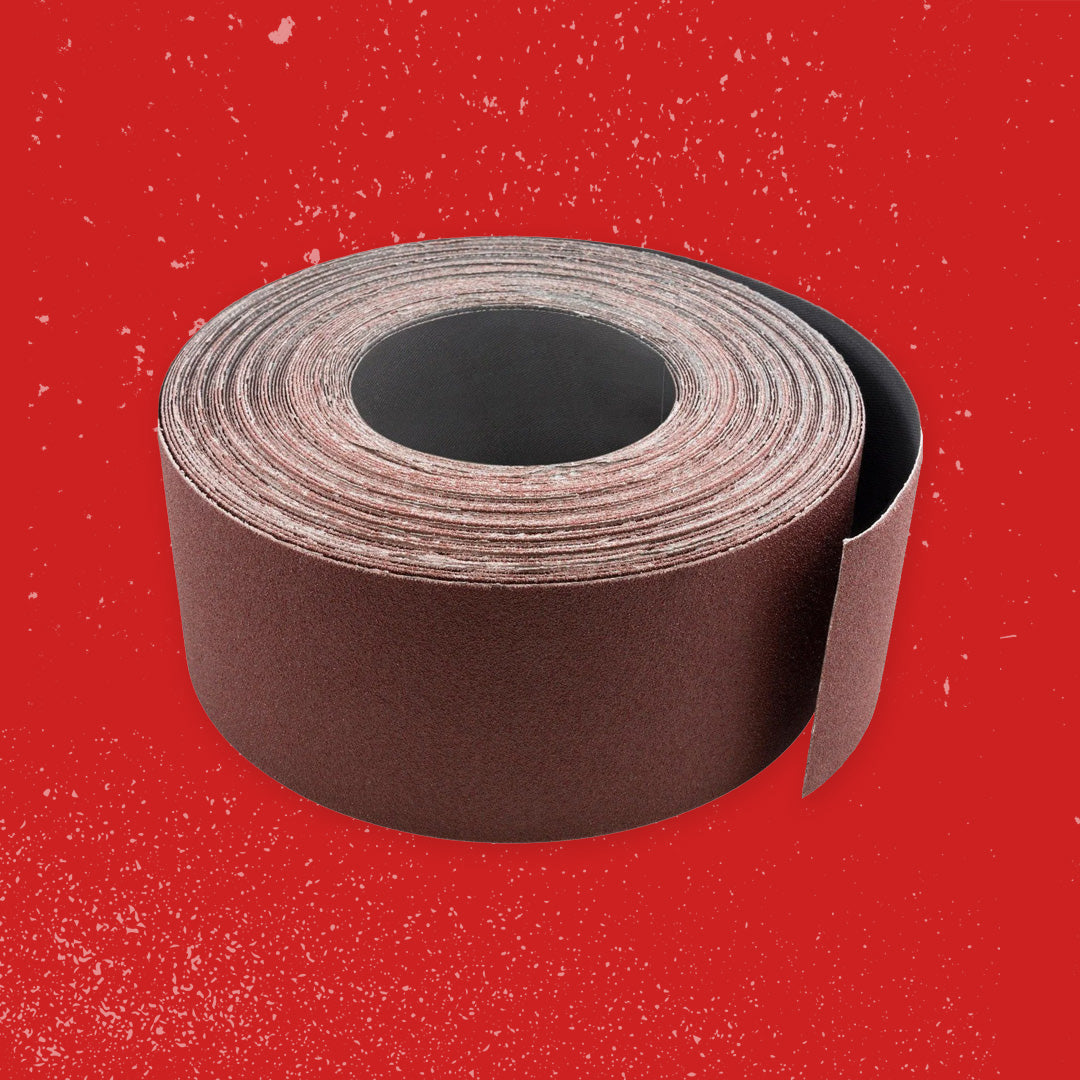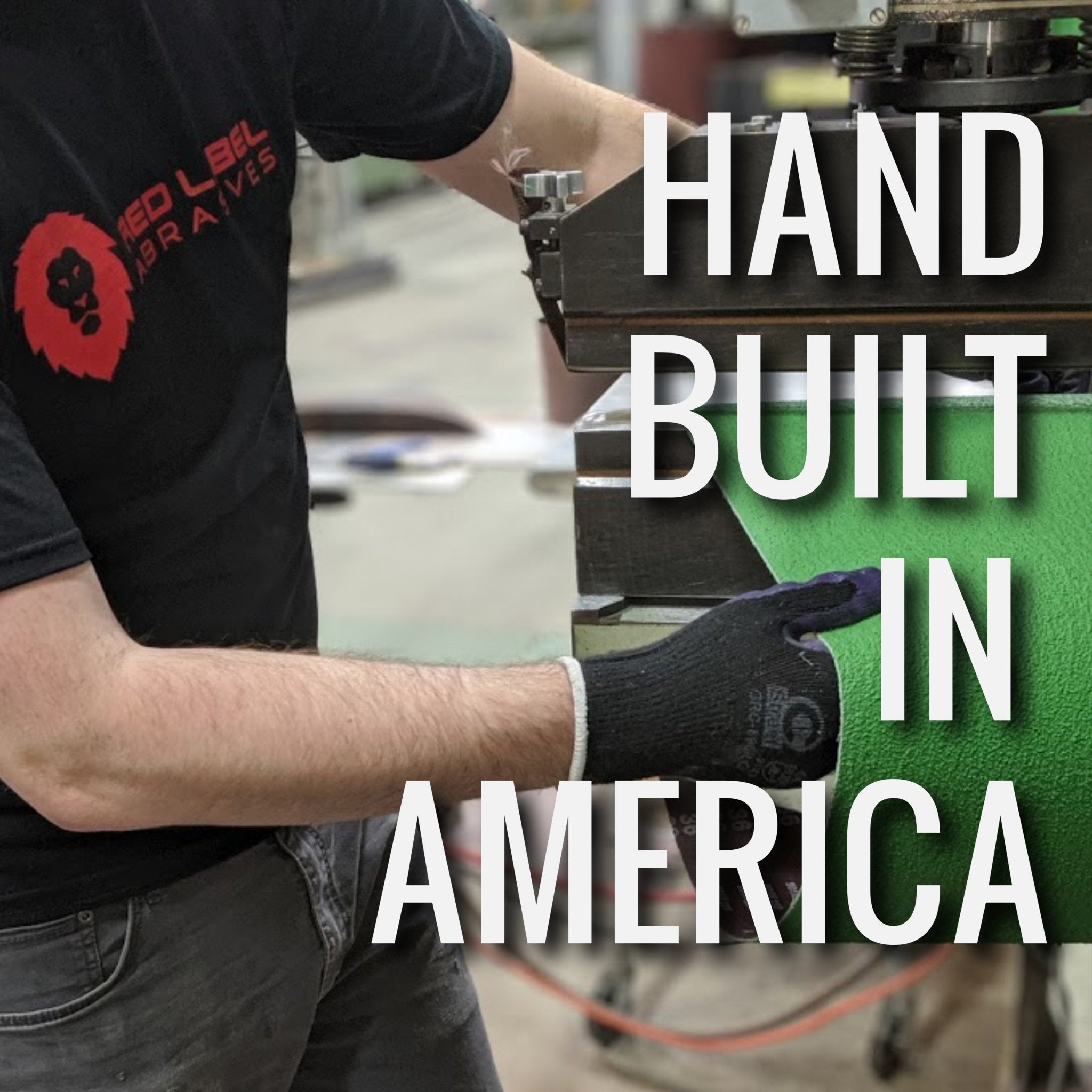Your Cart is Empty
Free Shipping over $150 (Excludes Oversized Products)
Free Shipping over $150 (Excludes Oversized Products)
Sanding Belts
Sanding Discs

How to Heat Treat a Knife
by David Kranker 5 min read

Quick Summary
Heat treating is a part of the knife making process that is designed to help harden the steel of the blade for use. Heat treating can be accomplished in four steps: normalize, quench, temper, and sand.
Topics Covered:
- Needed supplies
- Normalizing
- Quenching
- Tempering
- Finishing up a heat treat
- Contact an abrasive specialist
The purpose of heat treating a knife is to harden the steel sufficiently for use. The correct degree of hardness will depend on the blade’s intended purpose. It needs to be hard enough to maintain its edge yet flexible enough to endure regular and sometimes intense use.
At Red Label Abrasives, we take pride in providing knifemakers with the abrasive kits they need to produce quality knives. In this blog, we’ll review the steps involved with heat treating your blade so that the finished product strikes the perfect balance between strength and flexibility. These steps can be applied to all common knifemaking steels, including 1080, 1084, 1095 and 5160. The steps will also work regardless of whether your knives were shaped through forging or stock removal.
What You’ll Need
- Knife blade with beveling applied and surface brought to the preferred finish (once it is hardened, it will be harder to remove material via filing and sanding)
- Heat source (e.g. propane torch, mini-forge, or charcoal forge)
- Fireproof quench container with lid. You can use metal coffee cans, a cookie tin, or something similar.
- Oil for quenching. Realistically, most types of oil will work for this. Do not use water, however- it cools too quickly and will crack most steels.
- Fireproof regulator block, such as an aluminum tube, to hold the blade at the correct depth in the quench oil.
- Magnet for testing the steel temperature
- Tongs or vise-grip pliers for holding the blade safely during heating, quenching, and tempering.
- Fire extinguisher designed for grease or oil fires
- Face shield and heat-resistant gloves
- File for testing blade hardness
- Kitchen oven (recommended)
Step 1: Normalize
With this step, you recreate a uniform or normalized state within the steel, so that it becomes more resilient and easier to work with. The forging process in particular causes the carbides to bunch up and become oversized, which can prevent it from properly holding an edge.
Use a sheet of P150-grit sandpaper to dull the blade edge and minimize the possibility of warping or cracking during treatment. Then use the heat source to heat the steel to 1500 to 1600℉ before allowing it to cool. Be sure to rotate it regularly over the flame: concentrating on one side can cause problems with the finished product.
Below is an overview of recommended heating temperatures for common knifemaking steels:
- 1080: 1500℉
- 1084:1500℉
- 1095: 1575℉
- 5160: 1525℉
You can use a magnet to assess the temperature: steel loses its magnetic ability at around 1425℉, so if you heat it to the point that it’s non-magnetic, you know you’re getting close. Heat the steel a couple of shades brighter and you should be at the correct heating point.
Another way to test the temperature is by putting salt on the steel surface. Salt melts at 1474℉, so if you see it liquify, you’ll know you’ve hit hit critical temperature.
Step 2: Quench
After heating, quickly plunge the steel into a can of oil and move it back and forth in a slicing motion. This helps to prevent air bubbles from forming around the steel. Then lay it on the regulator block, which should be submerged in the oil. (The block ensures that both sides of the blade are evenly cooled.)
Many knifemakers recommend using canola oil heated to around 130℉, saying that water tends to cool the steel too quickly, which can lead to cracking, especially if the blade is on the thin side. In comparison, oil has a slower cooling rate. You can heat it up on your stove or use your forge to heat up a piece of rebar before plunging it into the oil to raise the temperature.
For the blade to harden, it needs to cool below 900℉. Wait about 10 to 15 seconds before pulling the blade out and checking it for warping. If it looks good, take a file and scrape its corner across the steel. A properly hardened blade will be stronger than the file and resist scratching.
Step 3: Tempering
Blade steel is extremely brittle after quenching. To soften the steel and relieve built-up stresses, you need to immediately heat it up again - this time to 400℉. This process, known as tempering, can be done over a fire or using a blowtorch, but the simplest method is to put it in your oven at 400℉ for two one-hour cycles, letting the knife cool between each one. If you’re using a different method, heat the knife until it turns a golden, straw-like color, which is typical for 400℉.
Note:
- Some knifemakers apply a ‘ cryo treatment’ to their blades before tempering. The steel is soaked overnight in dry ice or liquid nitrogen in temperatures ranging from -90℉ to -290℉, depending on the medium used.
- Tempering temperatures below 347°F should only be applied under certain circumstances, such as extreme demands made on high hardness, as lower temperatures typically result in a very brittle blade.
- Tempering temperatures above 662°F should be avoided, as they can cause reduced corrosion resistance as well as brittleness. If the treated blade is exposed to a heat that’s higher than the tempering temperature (for example, during grinding), the knife properties will be impaired.
Wrapping Up
By now, your blade is fully hardened. Now all you need to do is sand away any scale that may have accumulated over the blade after quenching. Apply a fine abrasive to your belt sander and run it carefully over the surface until the steel is clean. Then you can complete the final steps, which are applying an additional bevel at the desired angle and using a fine grit for final sharpening and polishing.
Up Your Knife Making Game With Premium-Quality Abrasives
For over 35 years, Red Label Abrasives has been providing both hobbyist and professional knifemakers with sanding belts that achieve superior results. We sell complete knifemaker kits, as well as separate belts and sheets to replenish your stock.
Our Knife Making Sanding Belt Kits
Red Label Abrasives is a family-owned company that has been producing American made, premium-quality abrasives for over 35 years. We take great pride in being able to offer unrivaled product quality and customer service. For more information about our products or to place an order, please call 844-824-1956 or fill out our contact form.
ABOUT THE AUTHOR
David Kranker is a writer and creative maker who has been covering the abrasive and knife-making industries on the Red Label Abrasives Blog since 2020. David spends his time continually researching sanding and bladesmithing to provide readers with the latest and greatest information. In his free time, David utilizes abrasives for many different home and auto projects at his home in Delton, MI.
Our Most Popular Abrasives

EdgeCore Ceramic Sanding Belts

EdgeCore Ceramic Flap Discs

Buffing Kit
Shop By Product Category





Why Choose Red Label?














